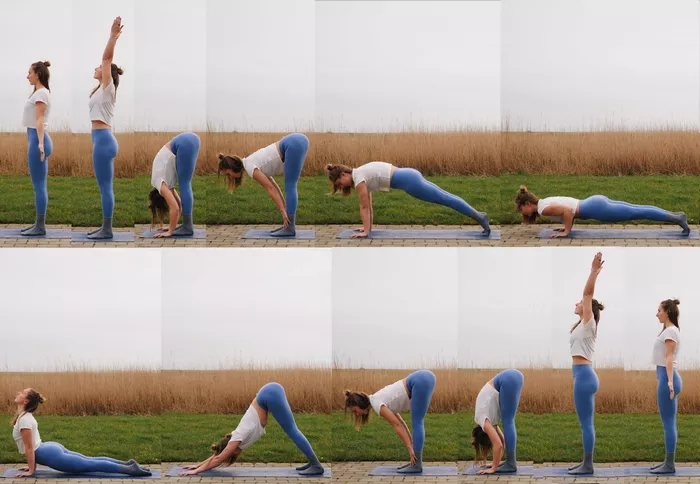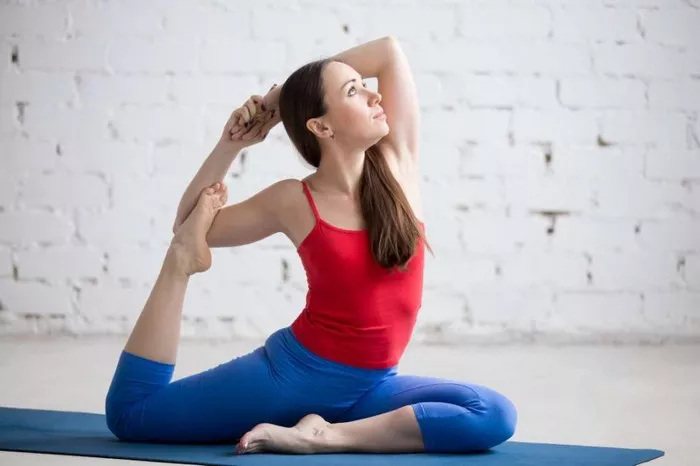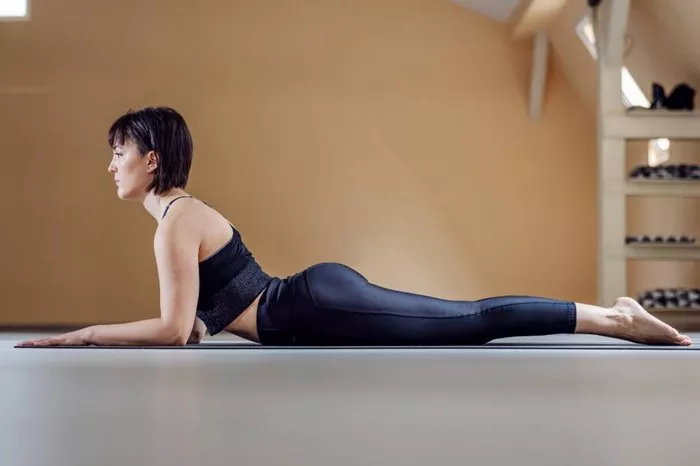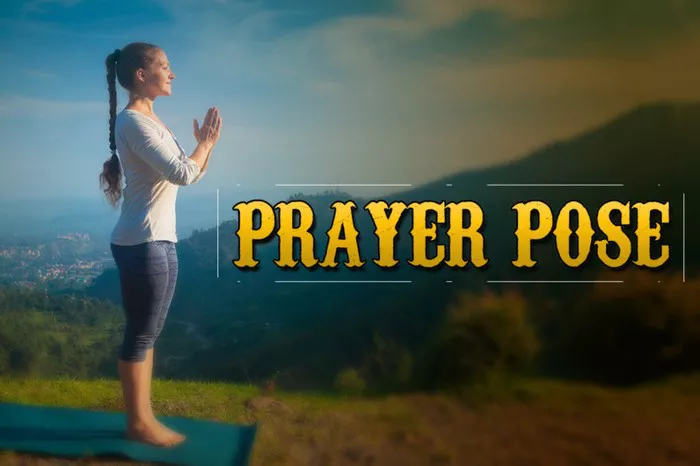Sun Salutation, also known as Surya Namaskar in Sanskrit, is a revered sequence of yoga postures that holds profound significance in the realm of yoga practice. Rooted in ancient Indian tradition, Sun Salutation is not merely a physical exercise routine but a holistic practice that integrates the body, mind, and spirit. Its rhythmic flow synchronizes breath with movement, fostering harmony within oneself and with the universe. In this comprehensive guide, we delve into the essence of Sun Salutation yoga, exploring its origins, benefits, variations, and step-by-step instructions for practitioners of all levels.
Origins and Symbolism
Sun Salutation has its roots deeply embedded in the rich tapestry of Indian culture and spirituality. In Hindu mythology, the sun god, Surya, is revered as the source of light, warmth, and life energy. The practice of Surya Namaskar is an homage to the cosmic divinity of the sun, symbolizing the journey from darkness to light, ignorance to knowledge, and mortality to immortality.
Each posture in Sun Salutation embodies profound symbolism, representing various aspects of the natural world and human existence. From the mountain pose (Tadasana), which symbolizes stability and strength, to the forward fold (Uttanasana), signifying surrender and humility, each movement in the sequence is imbued with meaning and intention.
Benefits of Sun Salutation Yoga
The benefits of Sun Salutation extend beyond the physical realm, encompassing mental, emotional, and spiritual well-being. Here are some of the key benefits:
1. Physical Health: Sun Salutation offers a full-body workout, toning muscles, improving flexibility, and enhancing cardiovascular health. It stimulates the digestive system, detoxifies the body, and boosts metabolism.
2. Mental Clarity: The synchronized breathing and fluid movements of Sun Salutation calm the mind, reduce stress, and improve focus and concentration. It promotes mental clarity and emotional balance, fostering a sense of inner peace and tranquility.
3. Spiritual Awakening: Through the practice of Sun Salutation, practitioners cultivate a deeper connection to their inner selves and the universe. It heightens spiritual awareness, facilitating self-realization and personal transformation.
4. Energetic Alignment: Sun Salutation balances the vital energy centers in the body, known as chakras, promoting harmonious flow of prana (life force energy). This alignment revitalizes the body, mind, and spirit, promoting overall vitality and well-being.
Variations of Sun Salutation
While the traditional Sun Salutation sequence comprises twelve postures, there are numerous variations and modifications to suit individual needs and preferences. Some popular variations include:
1. Dynamic Sun Salutation: This variation involves flowing through the sequence at a faster pace, synchronizing breath with movement to create a dynamic and energizing practice.
2. Gentle Sun Salutation: Ideal for beginners or those with physical limitations, this variation emphasizes gentle movements and modifications to ensure a safe and accessible practice.
3. Advanced Sun Salutation: For seasoned practitioners looking to deepen their practice, advanced variations incorporate challenging postures, transitions, and breathwork techniques to enhance strength, flexibility, and mindfulness.
4. Themed Sun Salutation: Practitioners can infuse Sun Salutation with specific themes or intentions, such as gratitude, healing, or self-love, by incorporating affirmations, visualizations, or mantra recitation into their practice.
Step-by-Step Guide to Sun Salutation
Here is a step-by-step guide to performing the traditional twelve-posture Sun Salutation sequence:
1. Mountain Pose (Tadasana): Stand tall with feet together, arms at sides, and palms facing forward. Ground down through the feet, engage the thighs, and lengthen the spine.
2. Upward Salute (Urdhva Hastasana): Inhale as you sweep your arms overhead, palms touching or facing each other. Lift the chest, lengthen the spine, and gaze upward.
3. Forward Fold (Uttanasana): Exhale as you hinge at the hips and fold forward, bringing the hands to the floor or resting them on shins. Keep the spine long and the knees slightly bent if necessary.
4. Halfway Lift (Ardha Uttanasana): Inhale and lift halfway, lengthening the spine and extending the crown of the head forward. Keep the hands on the floor or place them on shins for support.
5. Plank Pose (Phalakasana): Exhale as you step or jump back into a high plank position, wrists under shoulders, body in a straight line from head to heels. Engage the core and press through the heels.
6. Four-Limbed Staff Pose (Chaturanga Dandasana): Lower down halfway, keeping the elbows close to the body and the shoulders in line with the elbows. Keep the core engaged and the body strong.
7. Upward-Facing Dog (Urdhva Mukha Svanasana): Inhale as you press into the hands and tops of the feet, lifting the chest and gaze toward the sky. Keep the thighs lifted off the mat and the shoulders away from the ears.
8. Downward-Facing Dog (Adho Mukha Svanasana): Exhale as you lift the hips up and back, coming into an inverted V shape. Press the hands firmly into the mat, lengthen the spine, and draw the belly toward the thighs.
9. Halfway Lift (Ardha Uttanasana): Inhale and step or hop forward between the hands, lifting halfway with a flat back. Keep the spine long and the chest open.
10. Forward Fold (Uttanasana): Exhale as you fold forward over the legs, relaxing the head and neck. Keep the knees slightly bent if needed to maintain length in the spine.
11. Upward Salute (Urdhva Hastasana): Inhale as you sweep the arms overhead, palms touching or facing each other. Lift the chest, lengthen the spine, and gaze upward.
12. Mountain Pose (Tadasana): Exhale as you release the arms down by your sides, returning to standing with feet together. Ground down through the feet and take a moment to pause and reflect on your practice.
Conclusion
Sun Salutation yoga is a sacred practice that holds the power to transform the body, mind, and spirit. By honoring the divine energy of the sun and embracing the symbolism of each posture, practitioners embark on a journey of self-discovery and inner illumination. Whether you’re a beginner or seasoned yogi, incorporating Sun Salutation into your daily routine can lead to profound benefits and a deeper connection to the essence of life itself. So, roll out your mat, greet the sun, and let the transformative journey begin.
FAQs:
Are Sun Salutations for beginners?
Sun Salutations can be adapted for beginners with modifications to suit individual needs. Starting slowly, focusing on proper alignment, and gradually building strength and flexibility is key for beginners to safely practice Sun Salutations.
Can I do sun salutations everyday?
Yes, you can practice Sun Salutations daily, but it’s essential to listen to your body and adjust the intensity as needed. Daily practice can promote consistency, enhance flexibility, and cultivate mindfulness. However, it’s advisable to vary the intensity and duration of your practice to prevent strain or overuse injuries.
How long should Sun Salutation take?
The duration of a Sun Salutation session can vary depending on factors such as your fitness level, flexibility, and pace of movement. A single round of Sun Salutation typically takes around 2 to 3 minutes to complete. However, you can adjust the duration by adding more rounds or holding each posture for longer periods to deepen your practice and experience greater benefits.






















